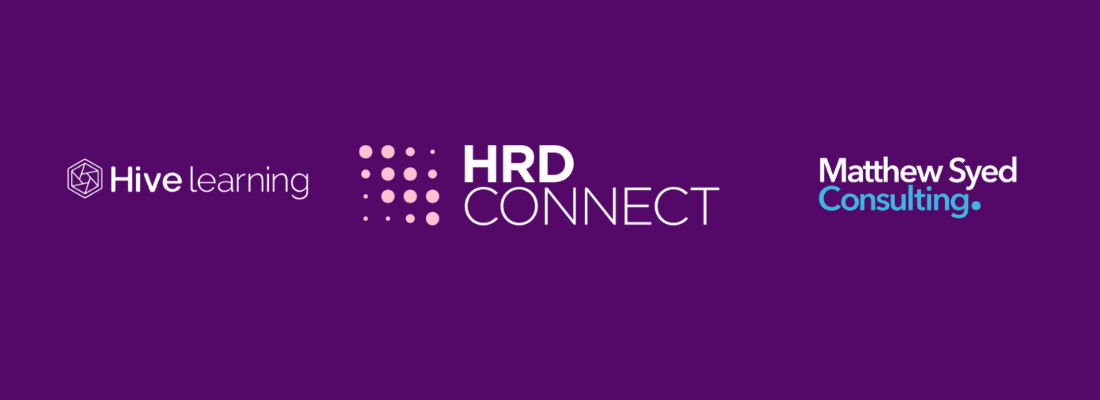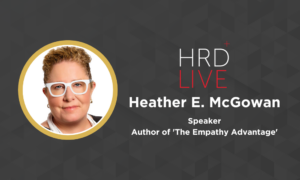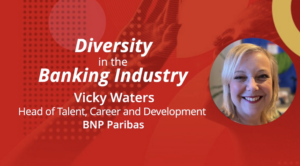Matthew Syed and Blenheim Chalcot on race, diversity and progress - what we learned
- 5 Min Read
Whilst the events of 2020 have brought considerable disruption, they have also helped set the stage for a crucial, global dialogue. Now is the time for business leaders to step up, make a change, and strive for true diversity. Matthew Syed and Manoj Badale discussed this at length during an exclusive webinar earlier this week.
- Author: HRD Connect
- Date published: Jul 16, 2020
- Categories

From even the most optimistic standpoint, it’s hard to refute that 2020 has largely been defined by tumult and commotion. For many, this is simply the most disruptive period we have experienced in our lifetimes.
However, the resulting social and political unrest has undoubtedly produced fertile ground for dialogue, and ultimately, change. As is often the case, an isolated event has acted as the catalyst for global uproar, and thanks to the power of new media, this has been thrust into the public domain.
Naturally, this dialogue extends to the world of business. Organizations around the world are now being held to account for their approaches to diversity and inclusion, with a common mission of building a fairer, more representative workplace.
Earlier this week, two prominent business personalities joined forces for an exclusive webinar hosted by Hive Learning and Matthew Syed Consulting, to share their thoughts on all of the above; Matthew Syed, author, columnist, consultant and HRD Thought Leader, and Manoj Badale, entrepreneur and co-founder of Blenehim Chalcot.
Both persons of color in the business world, the pair discussed, debated and compared notes on how organizations can break down systemic barriers and create the conditions for diverse teams to thrive. Here are our key takeaways from the conversation:
Racism has changed
Though drawing from different upbringings and experiences, Syed and Badale first acknowledged what is a fundamentally different landscape when it comes to racial prejudice in the modern age.
Syed demonstrated this by referring to his experiences with racial prejudice in the 1970s. He described what was then a more overt and aggressive culture of intolerance.
“I’ve suffered a long history of racism myself,” he said. “I was always conscious of my color and of prejudice.”
But crucially, despite positing that the situation in those days was in many ways ‘worse’, he suggested that what exists now is a much more insidious and systematic culture of racism.
He said: “What we’re left with is a much more subtle phenomenon, which is unconscious bias and structured racism.
“I think we need to break that down for the good of meritocracy and society.”
Following on from this notion of systematic racism, Badale described what he believes is, consequentially, a common feeling of disenchantment and disenfranchisement among the younger generations.
“When I talk to young people, I think there is an all time low of trust in the institutions that govern us,” he said.
“Young people are now really questioning whether our leaders and our governments are actually ever going to change those subtle forms of racism. And that makes me think that they [young people] are part of the answer.”
Creating diversity in the workplace
Following a lengthy to’ing and fro’ing of ideas, the pair went on to offer some conclusions as to the importance of diversity in business.
With truly characteristic brevity and directness, Syed simply said: “The issue of diversity is of massive importance for the performance of organizations.
“Organizations that hire diverse populations perform better.”
However, he went on to qualify this statement, outlining the difference between cognitive and demographic diversity, and the importance of organizations recognizing this distinction.
This is a poignant argument that will ring true for many. There is a growing culture of hiring strategies that are designed to fill a quota, and crucially, these quotas only take the most simplistic metrics into account, such as race and gender.
Syed enthusiastically denounced this approach, pointing out that metrics such as social background are often neglected, and therefore, organizations often find themselves with demographically diverse workforces who all attended the same elite universities. This, he added, is not a reliable strategy for building a productive workforce.
“When it comes to coming up with great ideas, if you have 10 people who think in the same way, they’re adding nothing to one another,” he said.
“You have leadership teams that look diverse on the surface, but they think in exactly the same way. I think most organizations aren’t yet in a place to implement true cognitive diversity.”
Incorporating and measuring innovation
Weighing in once again, and drawing from his own experiences with organizations, Badal echoed the significance of defining what diversity should look like in the world of business.
“Agility and innovation are ultimately the drivers of performance, and diverse thinking is such a key contributor in how effective innovation takes place,” he said.
Offering something of a strategic solution, he added: “It is not your responsibility to find the answers. It is, however, your responsibility to create a conversation within the organization and create a set of metrics which tracks the change.
“You have to be prepared to experiment and change behaviors.”
Though different theories and perspectives are at play here, the unifying principle is clear: change is needed. What’s more, such change may be required in rather a different form than many business leaders first thought.
In order to move forward, organizations must begin by reversing the standard, quota-filling mentality, and strive for true diversity, both demographic and cognitive, on a cultural and systematic level. Quite simply, this must be baked into the DNA of the organization.
Offering a final thought, Syed said: “We have a wonderful opportunity to create a society that is fairer and more meritocratic. The fact that business leaders are interested and taking this seriously is a truly great thing, and for now, I’m really encouraged.”









